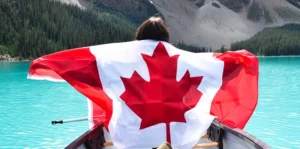JULY 30, 2014
Identical Twins vs Fraternal Twins: Genetics Difference
If you know you have twins, one of the first things you’ll want to know is if they are identical or not. This can be determined during pregnancy, as identical twins typically share a placenta while fraternal twins usually do not. But sometimes, the placentas can get damaged or discarded before zygosity is officially determined. And as you saw already, identical twins share the amniotic sac in rare situations.
To determine whether you have identical or fraternal twins, DNA centers perform twin zygosity tests. Twin zygosity DNA tests are performed anytime after birth, in which a swab from the cheek of each twin is taken. DNA gets taken from the samples, and then is analyzed and compared. At the DNA Diagnostics Center, we analyze each sample twice to make sure we accurately analyze each twin’s DNA.
Because your DNA is so complex, just about anything can happen around it. For example, an Ohio woman recently gave birth to rare identical mono/mono twins, Jenna and Jillian. What this means is that they share an amniotic sac and placenta during pregnancy, something that only happens in 1 in 10,000 pregnancies. It’s considered a high risk situation because there’s additional chance their umbilical cords can get tangled up, possibly cutting off their oxygen supply and causing death.
DNA Changes Over Time
Your DNA can change over time in response to environmental factors. External factors can cause a different appearance in identical twins, and their DNA can become dissimilar, too. For instance, the Institute of HeartMath claims your emotions can change your DNA over time.
One way DNA works is that it experiences random mutations over time. Viruses can also inject their own DNA into the host genome. A wrong base can be added during replication. Even the food you eat can cause DNA changes.
Thanks to technology advances like DNA testing, it’s relatively easy to distinguish between identical and fraternal twins. Identical twins appear very similar visually on the surface, but underneath, their DNA is exactly the same at birth. Their appearance changes because of life experiences or DNA changes over time.
For example, if one gets a tattoo or other identifying mark, the twin will be uniquely identified by that mark from the other twin. If one experiences a severe physical injury, like a dog bite or a bad car accident that harms their limbs, that also changes their appearance.
Besides visual differences, DNA changes are based on a number of factors.
You, at one time, were just a single cell inside of your mother. Now, you have somewhere between 50-100 trillion cells. To grow the number of cells, DNA copies itself (called “replication”). While DNA does a great job of copying itself, it’s not perfect. The average person experiences 100 DNA mutations, but since you have somewhere around 3 billion base pairs, it’s quite a low number. You can also experience a mutation at different times during your development. If the mutation happens earlier during the replication process, more cells experience it. But that’s not true in all cases.
As you can see, DNA is mostly a stable thing. But it’s not perfectly stable. Most people remain relatively similar, but then some become vastly different because of DNA changes. One example includes the situation where one or both of the identical twins use illegal drugs, which can affect mood, personality, appearance and DNA. The DNA Learning Center says your DNA can also change as a result of exposure to radiation.
Other Ways to Distinguish Twins
Interestingly, twins’ fingerprints can also differ. During pregnancy, the fetus can touch the amniotic sac. When that happens during weeks 6-13 of the pregnancy, this changes the patterns of your fingerprints.
Police have run into scenarios where an identical twin commits a crime. To identify the proper offender, they use fingerprints if they have them available. If not, they have to rely on eyewitness evidence.
About DNA Diagnostics Center (DDC)
DNA Diagnostic Center is the world leader in paternity and relationship testing. We serve healthcare professionals, government agencies, and individuals around the world to determine family relationships with trusted accuracy.
More Questions? Don’t hesitate to call us: we’re here to help!
CALL NOW




